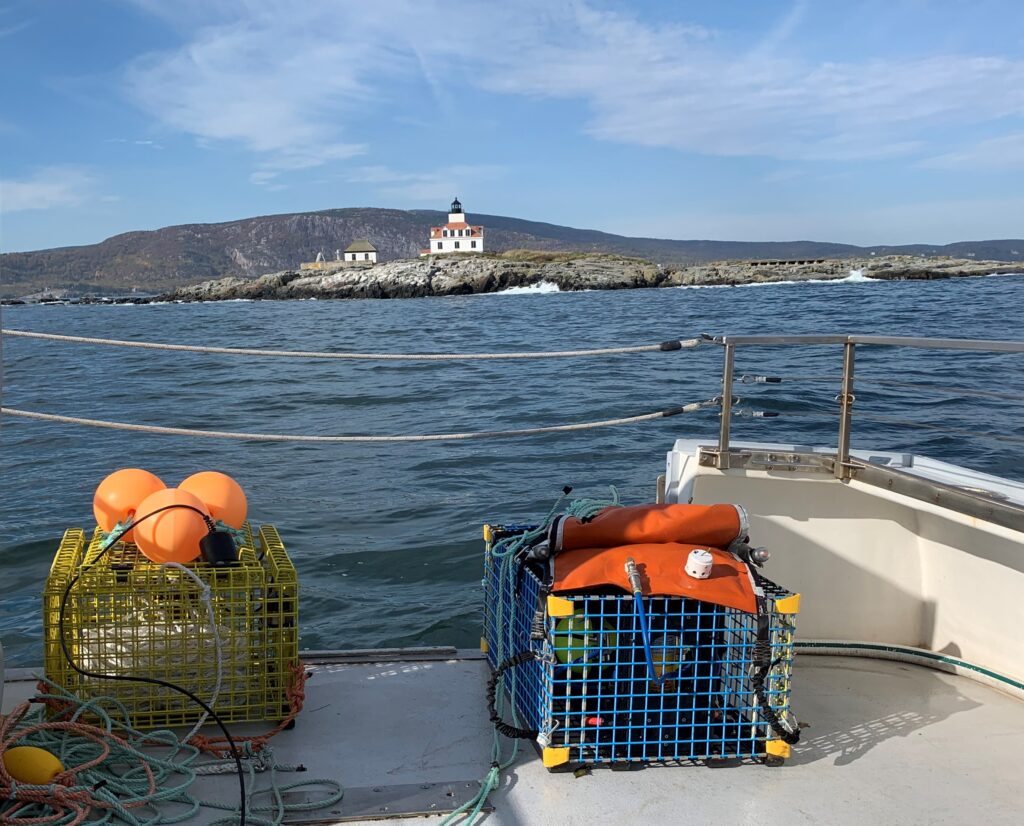North Atlantic right whales are dying faster than they can reproduce. There are now only an estimated 72 females remaining.
Entanglement in fishing lines
As the whales move along the east coast of North America they pass through the USA's and Canada’s largest lobster and crab fishing areas. Here lobster and crab gear connect traps on the ocean floor to buoys on the surface. Commercial lobster fishing in Maine alone generated $1.5 billion in 2021 in exponential value. As such, North Atlantic Right Whales and other whale species travel through millions of fixed fishing lines set in their feeding or breeding grounds. Climate change and improved efficiency of lobster boats has resulted in more fishing offshore in areas where whales are abundant.
Many whale species get entangled in fishing gear. Over 85% of right whales have been entangled at least once in their lifetime, and the majority have been entangled several times. In 2023 there were 6 known deaths due to entanglements while 24 entanglement injuries were reported. Scientific studies have shown that fishing gear entanglement is the biggest single threat to right whales.
The Initiative
There is a solution to help protect North Atlantic right whales against entanglement. New 'on-demand gear' technology is being developed and tested that significantly reduces the risk to right whales and allows fishermen to continue to fish. In fact this gear has been effectively used to allow fishermen access to waters seasonally closed to fixed gear line fisheries.

The on-demand gear does away with the vertical lines connecting surface buoys to the seafloor traps. The fisherman navigates to the traps through digital mapping, a technology that is continuously expanding. Once near, the fisherman can signal the release of a flotation bag or line and buoy that then allows them to retrieve their traps. By removing the vertical lines from the water column, the threat of whale entanglement is minimised.
The adoption of on-demand gear is to date limited. Fishermen have been fearful of change, and additional expenses are incurred by switching to on-demand gear. For many there is also the fear of whether they can fish as efficiently as they have using traditional gear. Gear manufacturers do not have clear market signals and require supportive regulations and increased private sector investments, allowing for ramped up gear production and improved production costs.
Innovative financial mechanisms
BGF has partnered with the Canadian Wildlife Federation and Conservation Alpha to design and implement the world's first impact bond for whales. The aim of the bond is to support the transition to this new fishing technology in selected fishermen communities and thus remove the primary threat to right whale survival.
‘The Whale Bond’ - Uses innovative nature finance mechanisms and market incentives to protect the livelihoods of fishermen and the lives of whales.
Required Technical Assistance Funding
Phase I: $373,000 (Concept completion);
Phase II: $325,000 (Bond design process).
Total: $US 698,000 over the next 15 months
The development of the Whale Bond includes engagement with investors and Government, the creation of success payment criteria, co-development of incentive structures for selected fishermen communities, and the creation of innovative revenue flows.
ROR - 2% minimum, with success payment to be determined.
For more information, please contact:
Christina Geijer, PhD - Whale Bond Director
Zack Klyver - Technical Lead, On-demand gear
Our partners:

